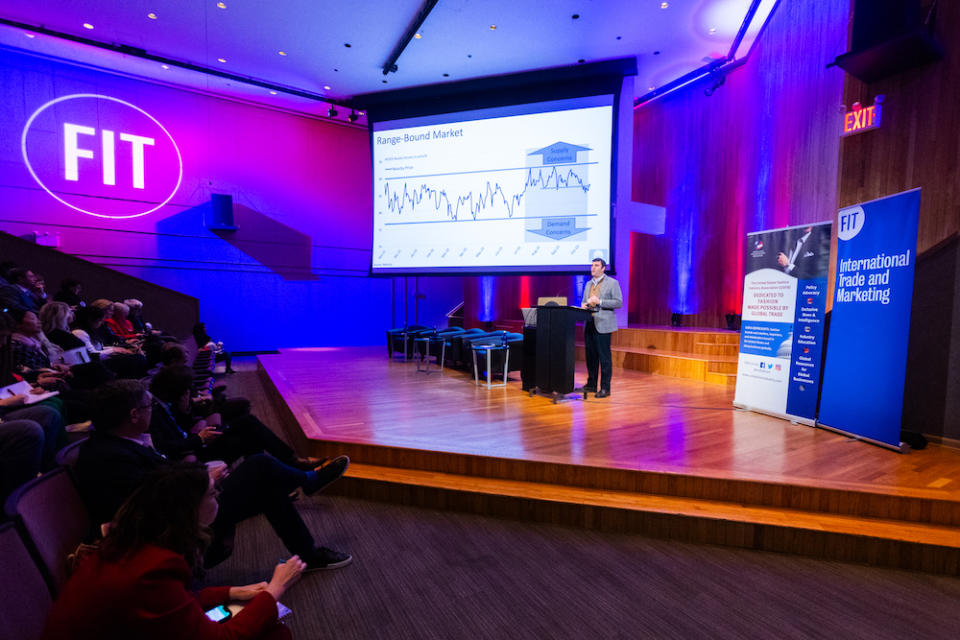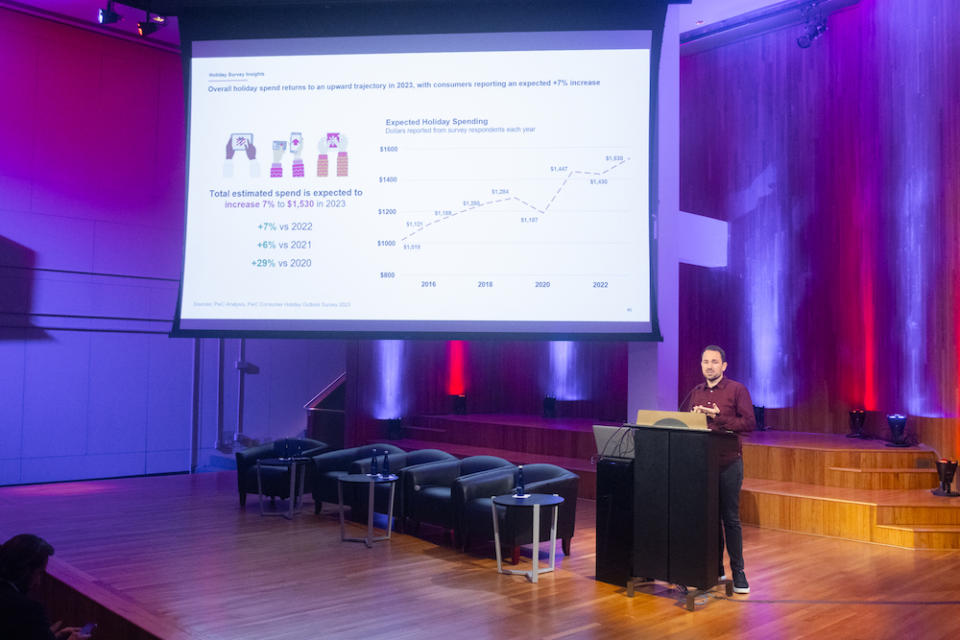How Optimism and Cost Consciousness are Shaping Retail Spending

Despite continued economic concerns—including recession rumblings and continued inflation-related pressures, speakers at the United States Fashion Industry Association’s Trade and Transportation Conference pointed to some positive signs for retail.
In a presentation, Kelly Pederson, partner in PwC’s retail practice, cited the firm’s survey which shows that although 65 percent of economists predicted a recession in the next six months in 2022, this year just 41 percent said the same. CEOs are similarly more optimistic, with the portion foreseeing a recession in the next half year falling from 35 percent in 2022 to 17 percent in 2023. “We’ve been talking for almost three years about, ‘Next month, we’re going to be in a recession,’ but it never really seems to hit,” he said. “There’s a lot of economic factors that are prevailing, that’s allowing continued growth.”
More from Sourcing Journal
Looking at the U.S. market, William Kimbrell, executive vice president and chief operating officer of Cotton Incorporated, said typically, consumer spending on apparel has grown about 2 percent each year. Following the Covid-related shutdown and related spending dip, this year-over-year growth has been greater. “We’re very optimistic about this and hopefully this trend will continue to see the consumer demand, consumers spending more on apparel,” the Cotton Incorporated executive said.
Kimbrell pointed to data that shows consumers spent roughly 2.5 percent of their disposable income on apparel between 2007 and 2019. After dropping off during the pandemic, it has resurged, while spending on services has not recovered. However, apparel still must compete with other categories as costs of goods have inflated. “The consumer is very price sensitive when it comes to apparel,” he said. “If the cost of apparel goods is going up, consumers are going to be more price sensitive and maybe less inclined to buy apparel. And maybe they’ll spend that money on services or other types of durable goods.”
Per Pederson, one area where consumers say they are pulling back their spending is luxury, but this hasn’t extended to the more affordable segments of fashion. Meanwhile, in necessary categories like groceries, consumers have raised their spending not because they are buying more goods, but because the same goods cost more. “What we’re really seeing is the continued tightening of the consumer wallet, based on some of the inflationary things that are happening in the marketplace,” he said.
Although the costs of goods at retail have risen, a PwC survey of consumers goods manufacturers and retailers found that producers are feeling the pinch more. “What we found over the last two to three years is on the manufacturers’ side, the costs were increasing much faster than the retailers were feeling, meaning manufacturers weren’t pushing their increased costs onto the retailers or weren’t able to do that,” said Pederson. “Even though at the end of the day, our consumer price index or inflation was increasing, that actually wasn’t increasing as much as the costs were on the back end.” He noted that this is starting to change, with a recent survey showing that input costs have begun to decrease.
One of the major input costs for apparel manufacturers is raw materials. Kimbrell noted that cotton prices are being driven by a combination of supply concerns and downstream demand indicators related to consumers and the economy. In the current crop year, there is less cotton production than expected mill use, however he explained that cotton in warehouses can make up the difference. “While global production is down about 5 million bales, we really are in a good position to still supply the world’s cotton,” he said.

Another input cost is labor. Pederson noted that the talent shortage seen during the pandemic has subsided, having an effect on this expense. “[Retail CEOs are] starting to see wage rates ease a little bit and the amount that they have to pay for talent to retain and attract it is starting to ease,” he said. “From a CFO’s perspective, the…wage line on the P&L is starting to feel a little bit better.” He added that lower talent acquisition costs could enable the creation of new jobs in the industry.
How consumers shop
The overall economic optimism is translating to consumers’ retail behavior in the fourth quarter rush. Per PwC numbers, consumers say they will spend 7 percent more this holiday season compared to last year. Those who earn $190,000-$220,000 anticipate growing their spending even more, with an uptick of 38 percent, while respondents with incomes around $45,000-65,000 expect to grow their spend 3 percent. Additionally, women’s holiday spending growth is on a sharper uptick than men’s. Broken down by age, the cohort that is spending the most is millennials, and baby boomers have pulled back on holiday expenditures.

Although spending will be up, Pederson pointed out that shoppers are searching for deals and promotions more than in previous years.
Consumers’ awareness of sustainability is increasing. Per Cotton Incorporated’s surveys, as of 2023, around eight in 10 consumers are concerned about climate change. And as they consider the environmental impact of their clothing, they consider durability to be a key sustainable trait. Yet, although consumers care about sustainability, Kimbrell noted that price, fit and comfort are at the top of the list for purchase considerations, followed by aspects like color, style and softness. Sustainability trails behind these.
PwC’s research similarly indicates consumers are more willing to shell out for convenience and speed than they are for sustainability. They are also seeking out personalization, and 82 percent are willing to share data to receive a custom experience from a retailer.
Regarding holiday shopping channels, in-store shopping is having a comeback, driven by the youngest consumers. Despite also being digital natives, Gen Z shows more of a preference for brick-and-mortar discovery than the general population.

In a presentation, CJ Yeh, professor, Creative Technology & Design at Fashion Institute of Technology and founder and executive creative director of Cynda Media Lab, and Christie Shin, associate professor, Creative Technology & Design at FIT and design director of Cynda Media Lab, spoke about the concept of “marketing 5.0,” which is the next evolution of consumer connection that steps away from the virtual focus of social media and the internet. Instead, companies can appeal to the five senses for a more immersive brand experience. For example, this could translate into signature colors, scents or playlists that represent a brand.
“We have been experiencing a lot of dislocation,” said Yeh. “Digital communication is awesome, but do we truly enjoy sitting on the computer and just looking at those rectangles? No, we want to get that sense and sensibility back, and that’s why multi-sensory branding is becoming more and more important for brands of all kinds.”

